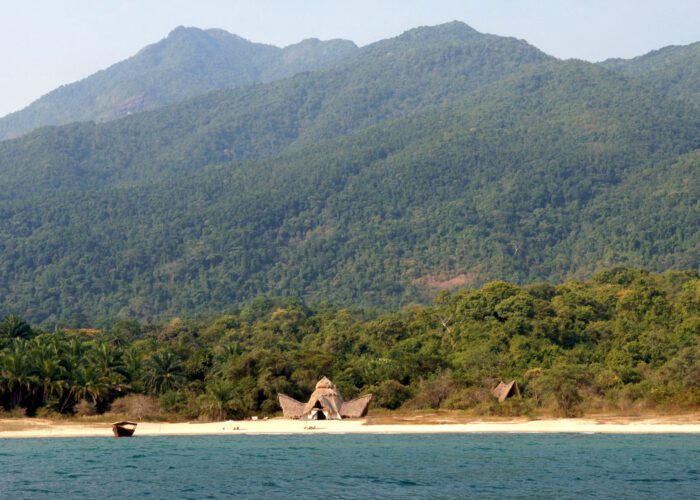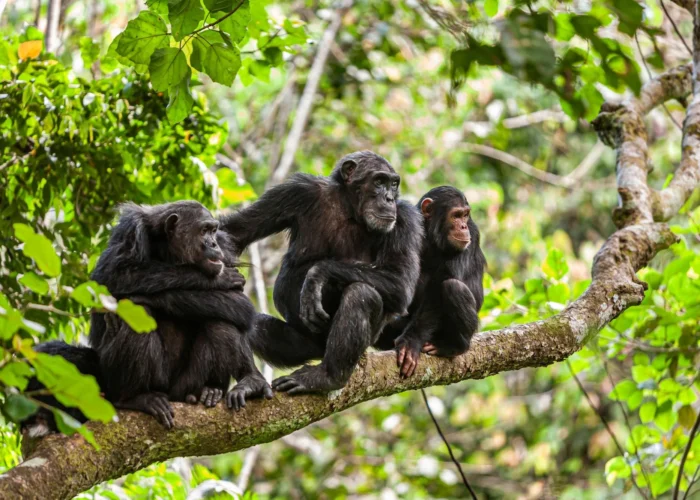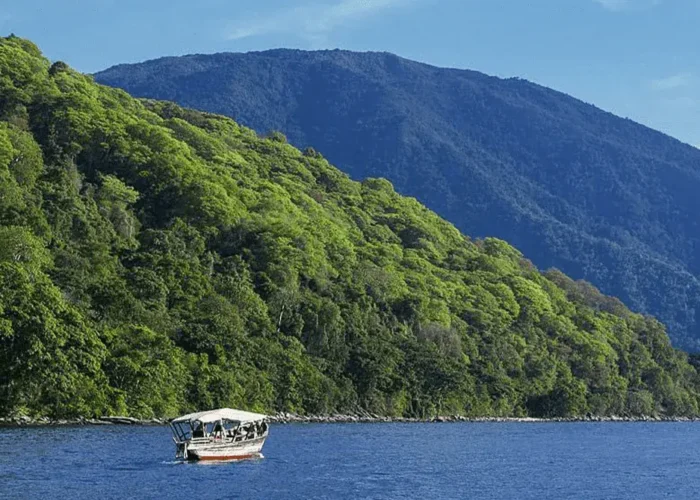Mahale Mountains National Park: The Experience
Remote, magical Mahale has steep, lush forests, lakeside beaches and Africa’s best chimpanzee safaris. The park’s breathtaking array of habitats include rainforest, grasslands, alpine bamboo and woodlands; where some 50 species of animals have been recorded, predominant among these being representatives from various monkey and ape families, and over 90 unique species of fish swim in the clear waters of the lake. Accessed by boat or plane, Mahale is just over 600 sq km, and rises from a lakeside altitude of 770m to, at its highest point, 2,463m. Much of it is forested (miombo woodland, the locally named Kasoge lowland forest, bamboo and montane forest), giving way, above 2,300m, to mountain grasses. Areas covered by lowland forest are more humid, and receive greater levels rain per year than the rest of the park.
Given Mahale Mountains National Park’s various eco-zones (rainforest, savannah and miombo), its animals are specialists, and species tend to range within their areas. The tropical lowlands are dominated by chimpanzee, two species of squirrel, colobus monkey, duiker and grysbok. The savannah is home to lion, zebra and giraffe. The miombo woodlands support two species of antelope and Lichenstein hartebeest. The park is not, as of yet, fully studied, and of the 80 odd mammals so for recorded, it is supposed that another 35 exist.
Mahale Mountains National Park: Birdlife
More than 350 bird species have been recorded in Mahale Mountains so far, but this is expected to only be 80% of all species present. Most of them are forest birds, which are quite difficult to spot. Some of the more conspicuous birds to look out for are giant kingfisher, crested guineafowl and Ross’s turaco. Migratory birds are present from November to April.
In general, birdlife is plentiful year-round, but the best time for birding is from November to April. During these months, you can see resident birds in their breeding plumage, as well as migratory birds from northern Africa and Europe. From March to April, the rains can make birding difficult because forest trails become slippery. Chimp trekking is better in the Dry season, from May to October, since they are easier to find.



